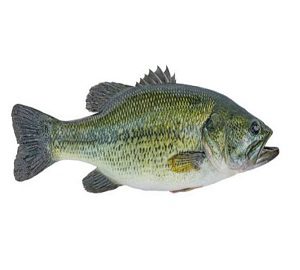 For most anglers, bass fishing is more than just fishing because the bass is tough to catch; it gives a sense of accomplishment to the anglers when they see one. Catching the bass fish can be difficult even with the fish finder if you do not know how to look and what to look for.
For most anglers, bass fishing is more than just fishing because the bass is tough to catch; it gives a sense of accomplishment to the anglers when they see one. Catching the bass fish can be difficult even with the fish finder if you do not know how to look and what to look for.
Fishfinders are an essential tool, and they can tell a lot of things when used correctly; you can observe the bass on the sonar screen when you know what they look like. There are different sonars out there, and with adjustment in settings, you can make them perfect for bass fishing.
If you do not want to miss a single bass appearing from the fish finder’s screen, then it is better to adjust some settings first. Fishfinders can be changed in different ways when looking at other things from them. In this article, we will learn how to set and use fish finders to locate bass.
How To Use Fish Finder To Locate Bass?
Understand The Fish Finders
Fishfinders are not the equipment that takes photos underwater, but they work by sending out the sound and recording the feedback when they bounce back by striking something. When they hit a hard object, the response would be high, and the answer would be below when they strike a soft object.
There are many types of fish finders, and to locate the bass effectively, it is better to employ more than one. The side imaging sonar tool is essential when you look for bass because it can give you a comprehensive view of the area.
Setting The Fish Finder
Some necessary settings have to be focused for fish finders when you are looking for bass.
Range
The first thing that you must adjust is the range. Setting it too high means that sonar will cover more area, and as a result, the quality will drop. On the other hand, setting sonar too low means missing vital details. Bass like shallow water in the fall, and they can be found 10 to 15 feet. They can go as deep as 25 to 30 feet in the summer. It is better to set the vertical limits to the bottom as they can be found anywhere. The optimum range for the side imaging sonar is 40 feet is adequate enough.
Sensitivity
You must choose medium sensitivity because choosing low means you can miss tiny details, and choosing too high a standard that everything will appear as a bright signal would be harder to spot.
How Bass Look Like On Fish Finder
Many people think that all the fish on the fish finder look the same, but that is not entirely true. Bass indeed look like dots on the side imaging sonar, but if you know how to look at them, you can figure them out.
Bass dots appear at a horizontal distance from one another. If you spot a drop and another bubble about half inches apart flat, you can confidently say it is bass.
The baitfish is the best proof that the school of bass is in the area. Baitfish appear as the stacked-up dots on side imaging, and on the regular sonar, they appear as a bunch of colors in a triangular or circular pattern.
The school of bass prefers to swim horizontally rather than vertically, so you would recognize them as the dots spread horizontally rather than vertically. One important thing is that bass like their own space, so if you see beads stacked up, it is probably not bass.
On the regular sonar, bass appears like arches when the boat moves at 2 to 3 mph, but if the ship is stationary, they will appear as long horizontal lines.
Final Thought
Locating the bass on the fish finder is not too difficult if you know what you are looking for. There are different signs of bass on the fish finder. It is better to look at the side imaging sonar and regular sonar simultaneously to understand the underwater environment better. There are high chances of bass fishing in fall when actively hunting.
- What Do You Need for Fishing - August 18, 2022
- How to Find Offshore Fishing Spots - August 18, 2022
- What to Use for Trout Fishing - August 17, 2022
